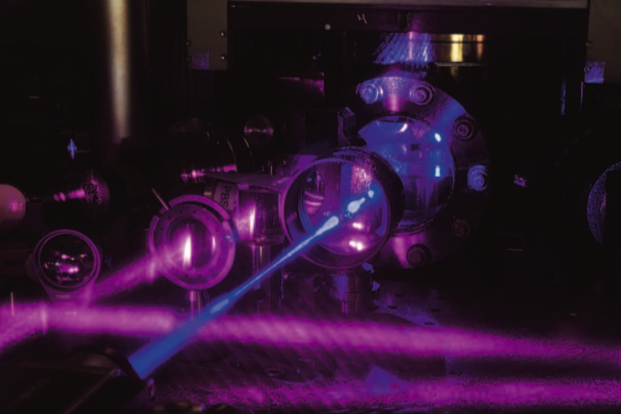Denise Caldwell, Director, Division of Physics U.S. National Science Foundation (NSF), sheds light on research that addresses the most fundamental questions surrounding the structure and inner workings of our world
From the far reaches of the cosmos to the nature of the most elusive of all the elementary particles, from the most energetic processes in the universe to the coldest matter in the universe, from inanimate material to living matter, the U.S. National Science Foundation Physics Division supports research that addresses the most fundamental questions surrounding the structure and inner workings of the world in which we live.
The most advanced measuring instruments ever
Capitalising on major international facilities that represent the most advanced measuring instruments ever constructed by mankind, scientists working with Physics Division support have used the NSF Laser Interferometer Gravitational-Wave Observatory (LIGO) (1) and the Large Hadron Collider (LHC) to discover objects in the universe that were heretofore not known to exist, identify the source of many heavy elements that make up the periodic table (2) and prove the existence of the final particle (3) making up the Standard Model of Particle Physics.
The first detection of a gravitational wave in 2015 opened an entirely new window onto the universe. When combined with the neutrino detection capability of the NSF IceCube detector at the South Pole (4) and the electromagnetic radiation detectors in the world’s telescopes, the new field of multi-messenger astrophysics was born.
Milestones of discovery
Physics Division support dating back to the early 1980s helped create the emerging field of Quantum Information Science (QIS) (5), which is on tap to become one of the major new technologies of the 21st century. The Physics Division continues to exert a leading role in driving forward these critical developments, which are crucial for U.S. security and economic leadership.
Investigators funded through the Physics Division have developed a simple quantum computer based on a platform of trapped ions (6) and are using QIS approaches to carry out measurements of almost unheard of precision to search for the dark matter that makes up 85% of the mass of the universe.
Further efforts in this realm of quantum control also led to the ability to cool a collection of atoms to such a low temperature that they can be moved around individually or made to behave as one unit, lending themselves to mimicking complicated, dense materials that cannot otherwise be studied at a detailed level and laying the groundwork for quantum simulators that act like computers to solve problems that cannot be solved on conventional, classical computers.
The physics of living systems
Over a decade ago, the Physics Division embraced the concept that significant progress could be made in understanding the living world by applying the theoretical and experimental approaches that have been so successful in interpreting the non-living world. The Physics of Living Systems program (7) that resulted has already begun to create a community of physicists who, working together with colleagues from biology, are changing what we can learn from observations of the incredibly complex systems that make up a living organism functioning in a constantly changing environment. Of particular note has been the application of new theoretical approaches that to date had not been a component of biology but which offer the possibility of deriving overall concepts that inform further experiments and drive innovation.
The frontiers of knowledge
The Physics Division considers its primary mission to be to maintain a portfolio that supports the research needed to address a scientific question that is at the frontier of knowledge as it is currently known, while at the same time extending and redefining that frontier.
Inherent in the implementation of that portfolio, which includes significant support for students and junior scientists, is the preparation of the next generation of an advanced, tech-skilled workforce that reflects the diversity of the nation and the development of innovative new technologies that arise in the quest to answer some of the hardest questions that Nature can pose.
The former has led to the formation of a workforce that, trained in the physics environment, has assumed positions in almost every discipline, including in fields as widely varying as academia, medicine and economics.
The latter has led to the development of a spectrum of indispensable tools that have their roots in creating whatever approach is needed to answer difficult questions: in just such a way did a detector designed to look for dark matter become a simple, FDA- approved ventilator for COVID-19 treatment (8) and a particle detector led to the discovery of a new optical sensor in the mammalian retina. (9)
References
(1) https://www.ligo.caltech.edu/
(2) https://www.nsf.gov/news/news_summ.jsp?cntn_id=243382
(3) https://www.nsf.gov/news/news_summ.jsp?cntn_id=124704
(4) https://www.nsf.gov/news/news_summ.jsp?cntn_id=295955
(5) https://www.nsf.gov/mps/quantum/quantum_research_at_nsf.jsp
(6) https://www.nsf.gov/news/news_summ.jsp?org=NSF&cntn_id=296227
(7) https://www.nsf.gov/funding/pgm_summ.jsp?pims_id=505425&org=PHY&from=home











